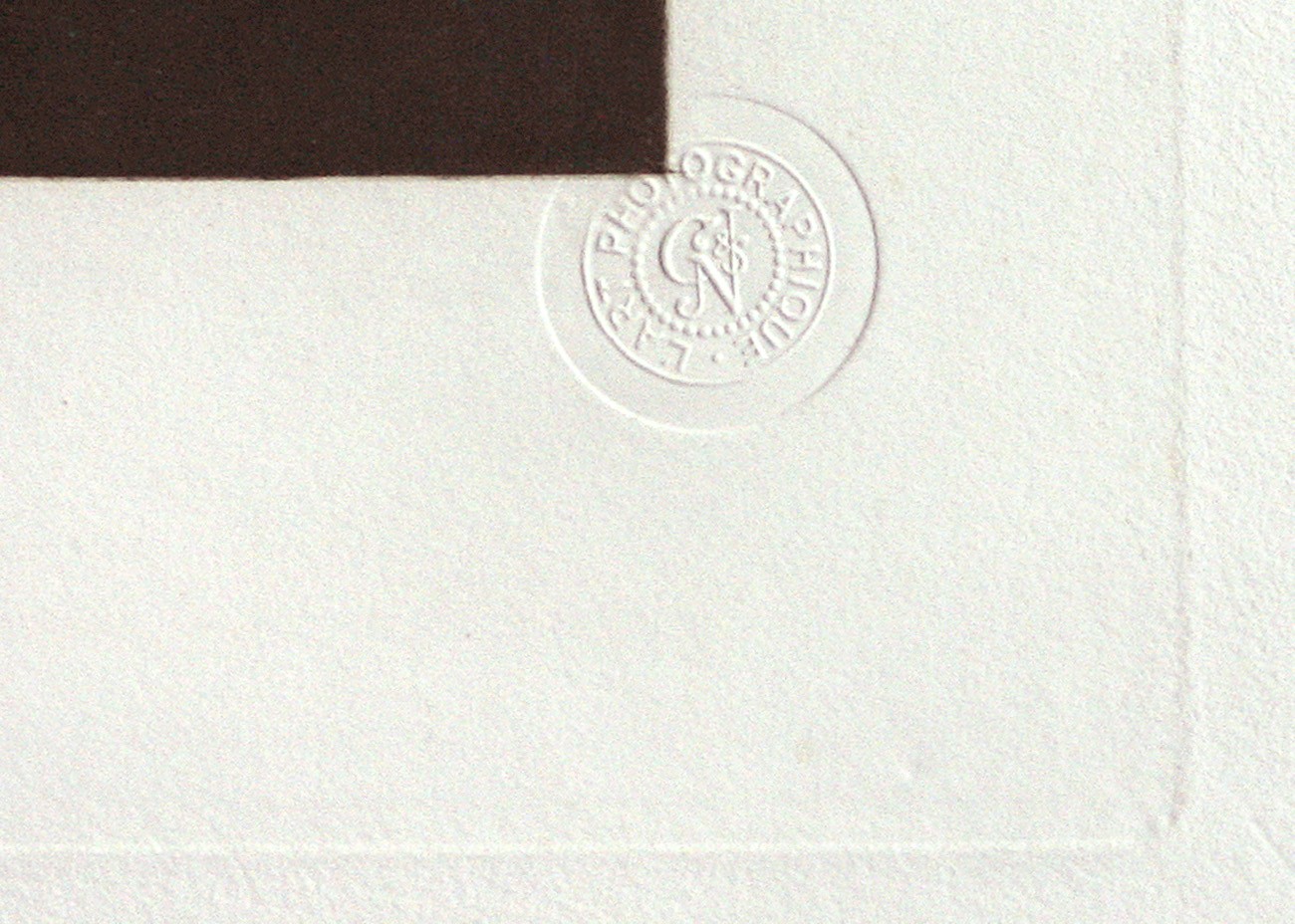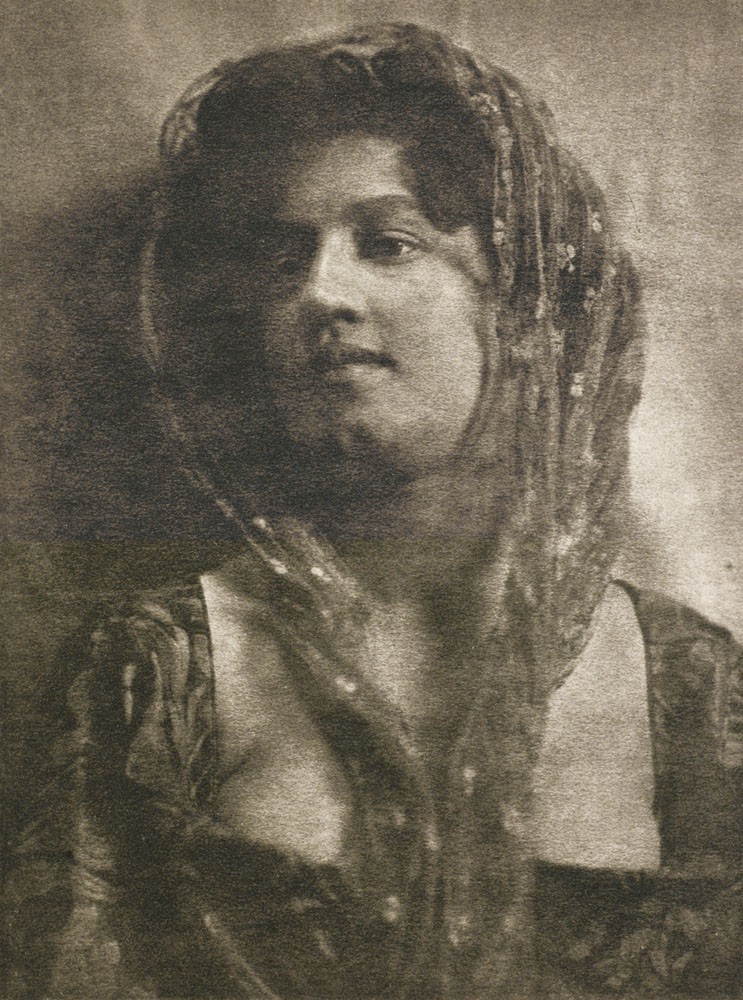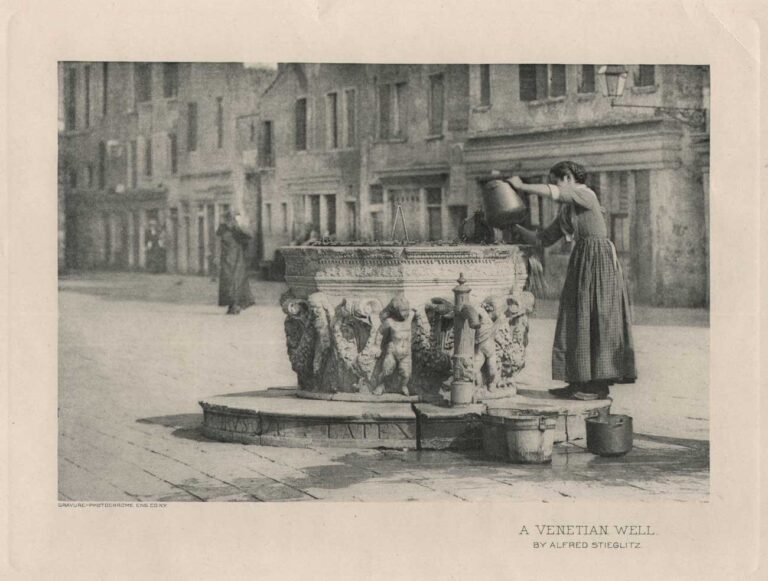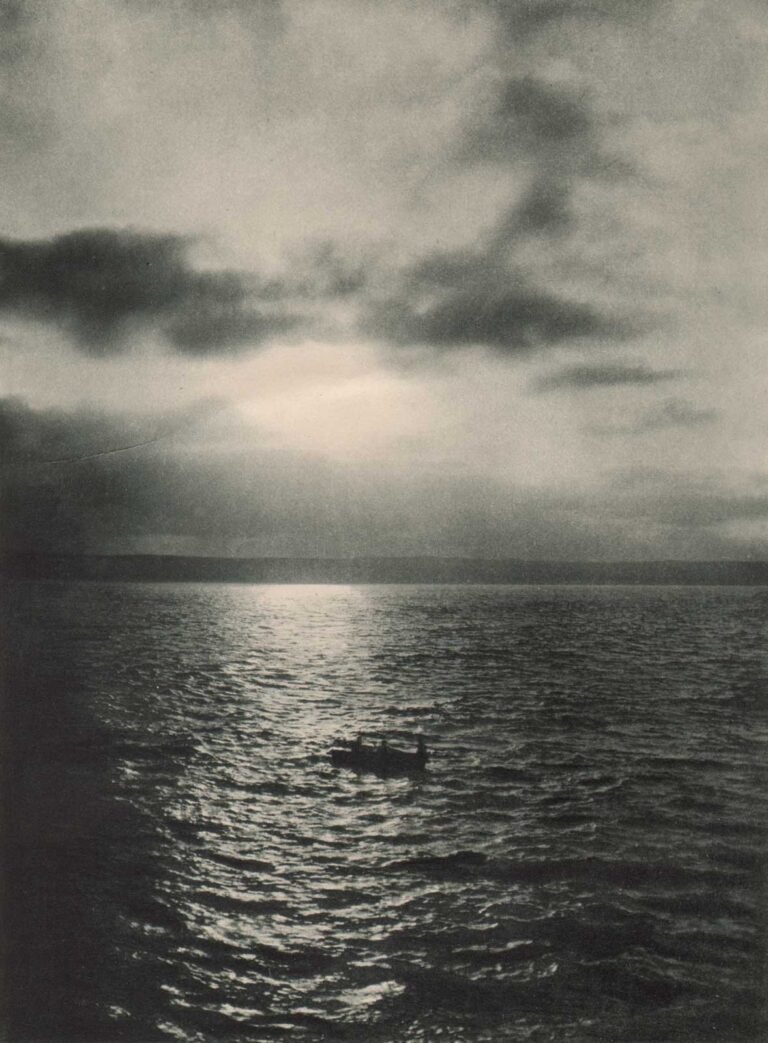
L’Art Photographique Blindstamp
Plates included in the monthly photographic journal L’Art Photographique typically (but not always) are impressed with a 2.0 cm circular blindstamp bearing the name of the journal in the outer circle: L’ART PHOTOGRAPHIQUE, as well as the intertwined last name initials for its Paris publisher: C&N, in the inner circle, for Georges Carré and C. Naud.
The blindstamp can be found in the lower right hand corner of the plate image margin and usually, but not always, overlapping slightly with the photograph itself. This particular example shows the blindstamp impressed within the corner of the photograph Chant Sacré by French photographer Constant Puyo. In this example, the very wide outer margins of the copper plate mark for this hand-pulled photogravure (héliogravure) are included for purposes of scale.
Blindstamps used for this journal are important because no other engraving appeared on its plates, making it an easier way to identify the work as coming from the publication. (1.) Historically, blindstamps or more typically, inked institutional names made from a rubber-stamp were used on valuable photographic plates in order to lend credibility to their worth based on the publication itself and as is more often the case for libraries-to deter theft.
1. And especially so since these over-sized plates were intended for framing by the publishers, which would entail separation of the attached tissue-guard along with the photograph’s pertinent details.



